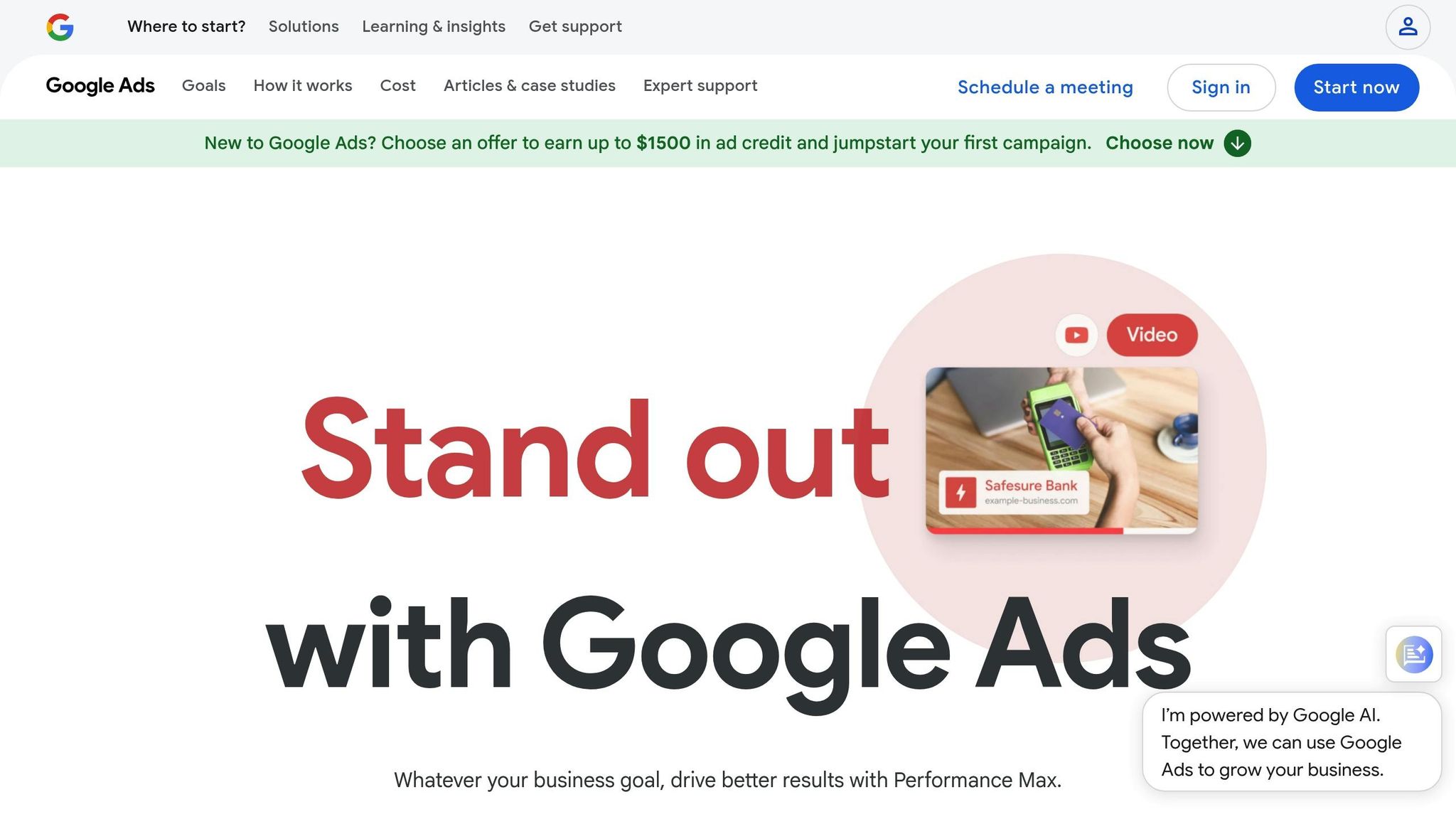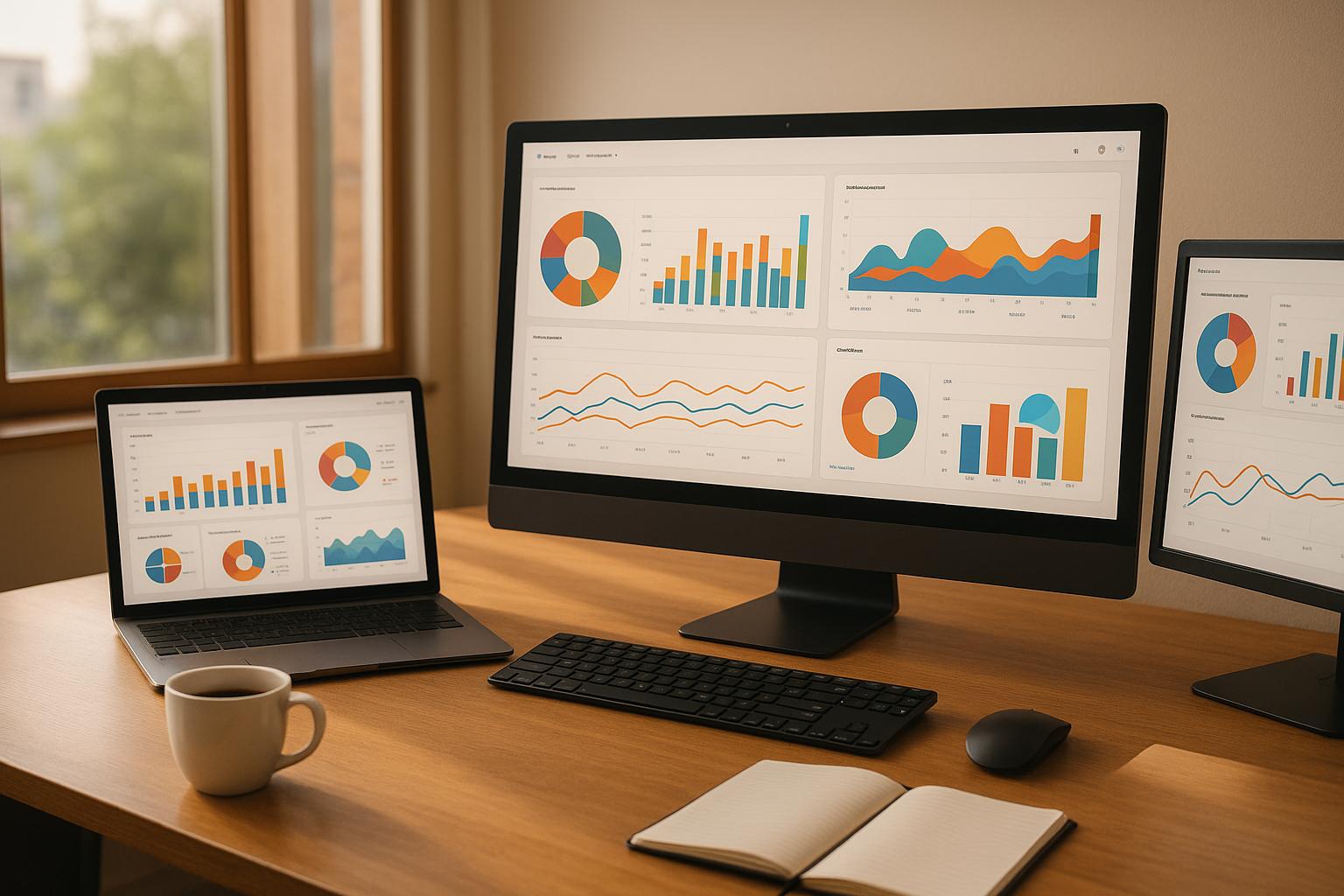Want to lower your Google Ads costs? Your Historical Quality Score holds the key. It’s a 1–10 score that evaluates your ad performance over the last 90 days based on:
- Expected Click-Through Rate (CTR): How often users click your ads.
- Ad Relevance: How well your ad matches search intent.
- Landing Page Experience: How user-friendly and relevant your landing page is.
Why It Matters
- Higher Scores = Lower Costs: Ads with a score of 10 cost 50% less per click, while a score of 1 can make CPCs 400% higher.
- Better Ad Placement: Higher scores improve your ad rank and visibility.
How to Improve
- Write engaging, keyword-focused ad copy.
- Optimize landing pages for speed, mobile use, and relevance.
- Use historical data in Google Ads to track trends and refine your strategy.
Quick Tip: Check the "Quality Score (hist.)" column in Google Ads for insights into past performance.
This score isn’t just a number - it’s a way to cut costs, boost ROI, and stay ahead of competitors.
Google Ads Quality Score: Everything You Need To Know (2024)

3 Main Elements of Quality Score History
Historical Quality Score is built on three core factors that directly influence your campaign's performance. Let’s break down these components and explore what they mean for your advertising strategy.
Historical Click-Through Rates
Historical CTR reflects how well your ads have engaged users over time. For instance, ads in the top position average a CTR of 7.11%, while those in position nine manage only 0.55%. Google uses this data to estimate future click potential, which plays a role in shaping your Quality Score. On average, search network ads achieve a 1.91% CTR, compared to just 0.35% on the display network.
To enhance your historical CTR:
- Write ad copy that aligns with user intent.
- Target long-tail keywords that reflect specific search goals.
- Use relevant ad extensions to provide more value.
- Test different headlines and descriptions through A/B testing.
Ad Message Relevance
Ad relevance measures how closely your ad messaging matches what users are searching for.
"Ad relevance in PPC Quality Score measures how well your ad aligns with the user's search intent." - Lavister, Former Digital Marketing Expert
For example, if you're targeting "red socks for sale", your ad copy should clearly highlight "red socks" to ensure relevance.
Steps to maintain strong ad relevance:
- Organize keywords into tightly themed ad groups.
- Include the main keywords directly in your ad copy.
- Mirror the language users use in their searches.
- Regularly review and refresh outdated ad messaging.
Landing Page Performance
Your landing page experience plays a crucial role in determining your Quality Score. Advertisers with scores of 9-10 can see CPCs that are 50% lower than those with scores of 6 or less.
Here are the key metrics that impact landing page performance:
| Factor | Impact on Quality Score |
|---|---|
| Page Load Speed | Users expect desktop sites to load within 2 seconds. |
| Mobile Optimization | Essential, as 49% of global website traffic comes from mobile devices. |
| Content Relevance | Must align with user search intent and your ad messaging. |
| Navigation | Clear structure improves user experience and engagement. |
Advertisers with high-performing landing pages often see a 45% boost in ROI compared to those with average scores.
To maximize your landing page performance:
- Aim for loading speeds between 2-5 seconds.
- Implement responsive design for mobile users.
- Develop content that directly addresses user needs and search intent.
- Simplify navigation and include clear calls-to-action to guide users effectively.
Measuring Historical Quality Score
Google Ads provides tools to track historical Quality Score data, which is essential for optimizing campaigns. Knowing how to gather and interpret this data can help ensure your ads perform at their best.
How to Collect Data
Google's Quality Score reporting system includes seven specific columns that give you a detailed view of historical performance. These columns focus on three main components:
| Component | Tracking Period | Data Points Measured |
|---|---|---|
| Expected CTR | 90 days | Daily end-of-day scores |
| Ad Relevance | 90 days | Above/Average/Below average ratings |
| Landing Page Experience | 90 days | Performance indicators and user behavior |
To access this data, follow these steps:
-
Enable Historical Columns
Activate the following columns in your reporting view:- Quality Score (hist.)
- Landing Page Exper. (hist.)
- Ad Relevance (hist.)
- Exp. CTR (hist.)
-
Segment Performance Data
Break down metrics by day to see how Quality Scores change over time.
This data is used by Google's algorithm to calculate your Quality Score.
"Quality Score was and continues to be the key way to understand what Google thinks of the quality and relevance of your ads."
– Vimal Bharadwaj, SEO & Content Manager, Optmyzr
How Quality Score is Calculated
Google assigns a Quality Score between 1 and 10 based on weighted factors, with higher scores reflecting better performance. Here's how it breaks down:
| Factor | Weight | Performance Indicators |
|---|---|---|
| Expected CTR | Primary | Past click-through rates for exact match searches |
| Ad Relevance | Secondary | Alignment of keywords with ad messaging |
| Landing Page Experience | Secondary | Metrics reflecting user experience |
For instance, Zeller Media achieved a Quality Score above 9.0 by consistently monitoring these metrics. This led to an 18% drop in CPCs and monthly savings of $36,000.
Key Metrics to Monitor
- Exact Match Performance: Focus on click-through rates for exact match searches.
- Device-Specific Data: Understand how different devices affect performance.
- Geographic Trends: Analyze variations across locations.
- Time-of-Day Impact: Record how performance shifts throughout the day.
Evaluating Component Ratings
Each Quality Score component - Expected CTR, Ad Relevance, and Landing Page Experience - is rated over a 90-day period as:
- Above average
- Average
- Below average
These ratings are benchmarked against competitors using the same keywords. Interestingly, only 3% of companies meet the highest quality standards, achieving acceptability scores above 97%. By tracking and improving these metrics, businesses can significantly enhance their PPC campaigns.
sbb-itb-89b8f36
Quality Score Improvement Methods
Drawing from historical data, these strategies can help you enhance your Quality Score while improving your campaign's overall performance.
Improving Low-Performance Keywords
Underperforming keywords can drag down your Quality Score and inflate costs. To tackle this, create tightly focused ad groups by clustering closely related keywords. Incorporate negative keywords to filter out irrelevant traffic and refine your targeting. Regularly reviewing search query reports helps fine-tune keyword groupings. For example, Peet's Coffee saw a 455% increase in revenue and a 72% reduction in cost per order by optimizing their keyword strategy. These adjustments lay the groundwork for improving landing pages and ad copy - both critical for boosting Quality Score.
Updating Old Landing Pages
Well-optimized landing pages can convert up to 300% better. To achieve this, focus on the following:
- Speed Matters: Even a one-second delay in page load time can cut conversions by 7%.
- Mobile-Friendly Design: Ensure your pages are responsive and functional across all devices.
- Search Intent Alignment: Tailor content to match user intent, which can increase conversion rates by 60%.
"The most important part of the 'Landing Page Experience' component of Quality Score is providing a positive visitor experience." – Andrew Miller, Co-Founder and VP of Strategy, Workshop Digital
Ad Copy Updates
Your ad copy plays a direct role in influencing your Quality Score. Well-crafted updates can lead to impressive results, such as a 158% increase in return on ad spend. To optimize your ad copy, focus on these elements:
- Keyword Integration: Incorporate high-performing keywords naturally into your headlines and descriptions.
- Dynamic Elements: Use responsive headlines and descriptions that adapt to match user queries.
- Ad Extensions: Leverage extensions to enhance your ad's visibility and provide additional details, boosting click-through rates (CTR).
Conclusion: Using Historical Data for Better Results
Historical Quality Score data plays a key role in improving PPC campaigns. By examining trends over a rolling 90-day period, advertisers can turn data-driven insights into measurable outcomes that enhance their campaigns.
Higher Quality Scores don’t just improve performance - they also cut costs and increase revenue. For every $1 spent on Google Ads, businesses typically earn $2 in revenue. This underscores the value of regularly fine-tuning campaigns to stay competitive.
To make the most of Quality Score optimization, focus on these key actions:
- Keep an eye on component trends to see how optimizations are working.
- Make small, consistent adjustments that lead to noticeable gains.
- Leverage historical data to fine-tune ad copy, landing pages, and keywords.
These strategies not only enhance individual campaign performance but also strengthen overall marketing efforts. For those looking to streamline their approach, the Top PPC Marketing Directory offers tools and resources for managing campaigns, optimizing bids, and tracking performance - helping advertisers turn Quality Score insights into actionable steps.
With consistent analysis and targeted updates, advertisers can secure better ad placements, lower costs, and drive more conversions. The key is to think long-term and reinvest savings into further campaign improvements.
FAQs
How can I view and monitor my Historical Quality Score in Google Ads?
To check and track your Historical Quality Score in Google Ads, start by logging into your account. Navigate to the Keywords section, then click on the Columns icon above the statistics table. Select Modify columns and add the Quality Score metrics to your view. This will allow you to see both the current and historical Quality Scores for each keyword.
If you want to dig deeper, you can segment your data by day to observe changes over time and spot trends. Another helpful tool is the Report Editor in Google Ads, which offers advanced tracking options for analyzing Quality Score metrics. Keeping an eye on these scores regularly can provide useful insights into how well your campaigns are performing.
How can I improve my Expected Click-Through Rate (CTR) and Ad Relevance in my PPC campaigns?
Improving your Expected Click-Through Rate (CTR) and Ad Relevance can make a big difference in the success of your PPC campaigns. Here’s how you can fine-tune these metrics:
- Craft engaging ad copy: Focus on what sets you apart. Highlight specific benefits, include strong calls to action like "Shop Now" or "Learn More", and make sure your message matches the intent behind the search.
- Match keywords to ads: Incorporate your target keywords directly into the ad copy. This not only boosts relevance but also helps your ad stand out. Tools like dynamic keyword insertion can make personalization easier.
- Streamline your ad groups: Break down your campaigns into smaller, tightly focused ad groups centered on particular themes or products. This approach makes it easier to deliver precise, targeted messages.
- Polish your landing pages: Ensure that users land on pages that directly relate to your ad. A clear, easy-to-navigate layout and a smooth user experience can go a long way.
- Leverage negative keywords: Identify terms that don't align with your goals and add them as negative keywords. This keeps your ads from showing up in irrelevant searches and helps you focus on the right audience.
Consistently reviewing performance data and making adjustments is crucial to keeping these metrics on track and improving over time.
How does improving my landing page affect my Quality Score and advertising costs?
Improving your landing page can have a big impact on your Quality Score, which directly influences your ad performance. A better Quality Score often means lower cost-per-click (CPC), reduced ad expenses, and improved ad placement.
When your landing page content matches your ad copy and offers clear, helpful, and easy-to-navigate information, it can also boost your conversion rates. The result? More efficient campaigns and a stronger return on investment (ROI) for your PPC strategy.


